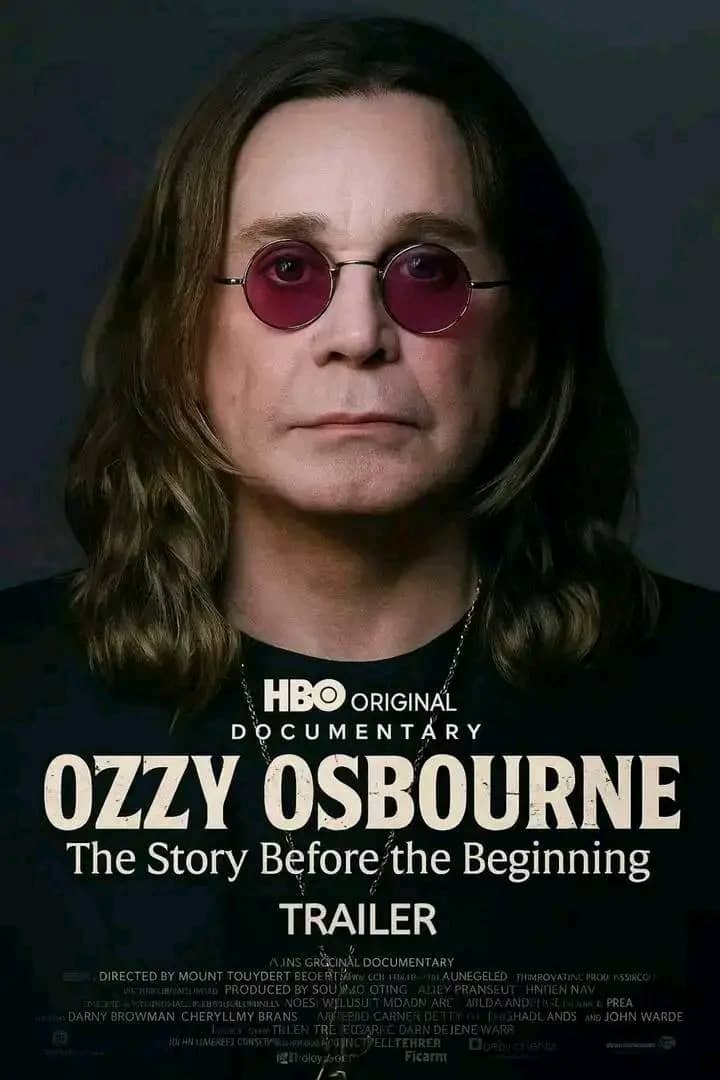
When the words Prince of Darkness are spoken, few names loom larger than Ozzy Osbourne. The iconic front-man of Black Sabbath and solo rock legend whose wild antics and fearless voice etched themselves into the annals of heavy metal. But a new documentary from HBO promises to peel back the layers of myth and myth-making, exposing the raw, unfiltered truth of Ozzy’s life behind the theatrics—and the devastation.
The Setup: A legend whose story has only half been told
Ozzy’s ascent from working-class Birmingham kid to metal god is well known. The bat-biting, the stage dives, the ranting and roaring that defined the out-of-control rock star. Yet even that legend now feels like prelude. This documentary takes us beyond the spectacles—into the moments when the shows stopped, the body quit cooperating, and the music became both lifeline and battleground.
The revelations: Not just rock but real suffering
As the film dives deep, what emerges is chilling in its candour. Long after the sold-out stadiums and screaming crowds, Ozzy confronted broken bodies, shattered expectations, and the creeping dread of mortality. He suffered a neck injury so severe he was initially sent home—and only when the crisis worsened did doctors finally tell him he’d shattered his neck.
He faced the diagnosis of Parkinson’s disease. He endured surgeries, cancelled tours, and humiliations no die-hard fan ever witnessed. In one revealing moment, Ozzy admits: “There’s been times when I thought my number was up.”
And perhaps most heartbreaking: the depression that followed. The man whose voice roared louder than thunder admitted he wished he was dead. This is not the emboldened superstar, but the fallen titan—stripped of illusions, fighting not only for a final show, but for peace.
The family, the music, the redemption
The film doesn’t shy away from the personal. Ozzy’s wife, Sharon Osbourne, his children Kelly and Jack, all appear—raw, honest, bruised. For years, the public saw the “Osbournes” in reality-TV caricature; here they come to life as a family battered by fame, illness, and the weird demands of a legendary surname.
Music remains the beating heart of the story. Despite the broken body, the cancelled tours, Ozzy returned to the studio. Albums such as Ordinary Man and Patient Number 9 stand less as triumphs of ego than as lifelines thrown into a sea of despair.
And yes, the final show arrives: a sold-out reunion of Black Sabbath in his hometown of Birmingham, a farewell to the stage. But it doesn’t play like a victory lap. It plays like a final stand. The camera lingers on the support beams of his body, the tremors behind the microphone, the sense of urgency in each riff and lyric.
Why this matters: Beyond nostalgia to truth
We often look back at legends through rose-tinted glasses: “He was larger than life.” But this documentary forces a reckoning: larger than life can also mean larger than health, larger than hope, larger than escape. The truth is messy—painful, unforgiving, yet undeniably human.
This film will matter for fans because it alters the context of Ozzy’s legacy. His wild years no longer read solely as rock-and-roll excess, but as the prologue to a deeper, quieter battle. It will matter for those interested in stories of resilience: how a man who conquered stages was conquered by his body, and yet refused to disappear quietly. It will matter for anyone who’s ever asked: What happens after the spotlight fades?
The ripple effect: Clicks, conversation, catharsis
Expect clicks. The title alone — SHOCKWAVES HIT THE PLAINS — sets the tone. We are not looking at the usual rock-biopic gloss. We’re looking at shockwaves. Plains. A metaphor for the flat, open ground of daily survival after the highs. It draws you in because we crave meaning in chaos.
Social media will buzz with reactions: raw commentary, brutal honesty, the kind of phrases you don’t expect from a man who once staged-dived into his own legend. Fans will share how they sobbed, how they cheered, how they never knew how much he suffered. There will be think-pieces on the crushing weight of fame, on how legends carry invisible injuries, and on how we treat our cultural icons when the roar ends.
What you should look out for
The moment when Ozzy realises the fall wasn’t just a stumble-on-stage—it changed everything.
The interplay between mother‐manager Sharon’s love and the professional demands of managing a man whose body betrayed him.
The recording of album tracks when Ozzy could barely stand; the paradox of art created in weakness.
The farewell concert in Birmingham: not a triumphant final act, but a last gasp—both triumphant and tragic.
The family home scenes: the legend walking through hallways, past memorabilia, carrying the weight of “what was” and “what might have been”.
Final word: A legend re-defined
Myth is comfortable. Rituals of stage dives and beer-and-blood rock reinforce what we expect. This documentary destroys comfortable myth to build something more honest. Ozzy Osbourne is not just the Madman of Rock. He’s a man who hit hard, fell harder, and rose briefly one last time to face his demons in front of the world.
If you thought you knew the story of Ozzy Osbourne, think again. This unveiling hammers home a new version: messy, painful, human—and ultimately far more real.
Because when shockwaves hit the plains,
the land doesn’t stay still. Neither does the legend.

Leave a Reply